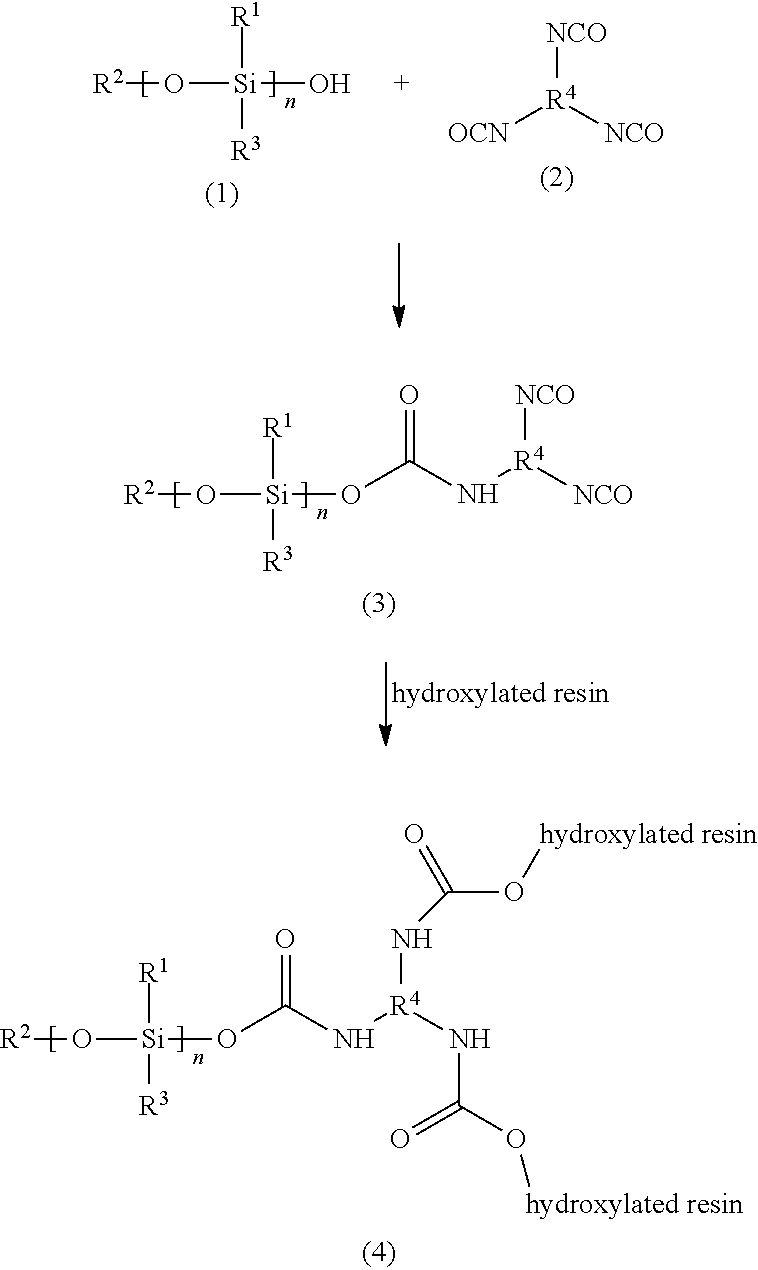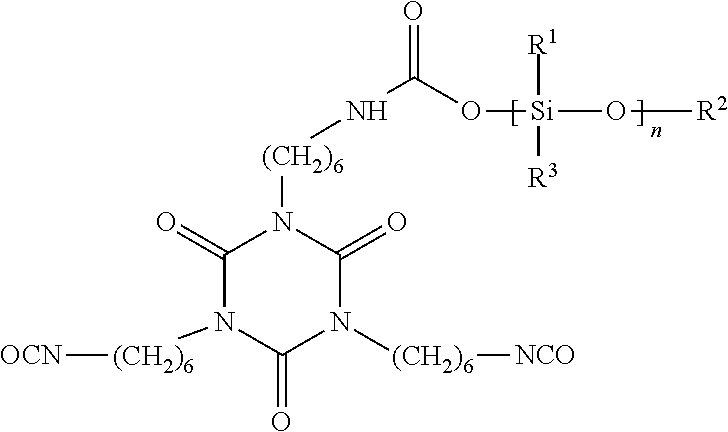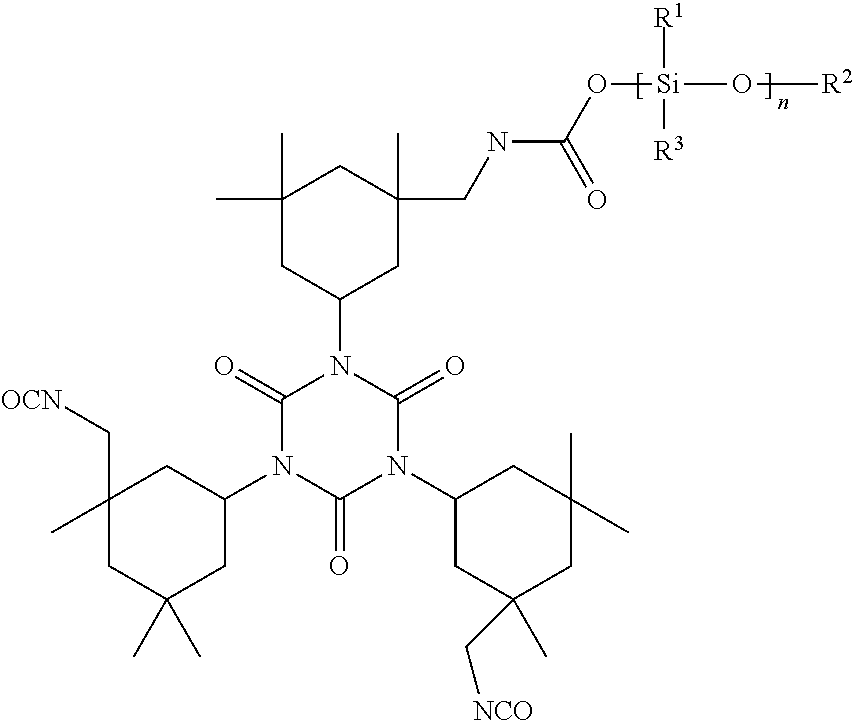Polysiloxane Modified Polyisocyanates for Use in Coatings
a technology of polyisocyanates and polyisocyanates, which is applied in the direction of coatings, organic chemistry, chemical instruments and processes, etc., can solve the problem that polyisocyanates do not produce desirable coatings
- Summary
- Abstract
- Description
- Claims
- Application Information
AI Technical Summary
Benefits of technology
Problems solved by technology
Method used
Image
Examples
example 1
[0027]A 1000-mL round bottom reaction flask was equipped with a heating mantle, stirrer, a Dean-Stark trap, condenser and nitrogen purge. To the flask, 345.9 g (1.57 mol) SY 231, which is a methoxy-functional methyl phenyl polysiloxane intermediate, was added. To the intermediate was added 1.7 g of a hydrolyzation catalyst, namely tetra isopropyl titanate (which is 0.5% based on the weight of the silicone intermediate), under agitation and a nitrogen atmosphere as the catalyst is extremely air-sensitive. Following the addition of catalyst, 5.58 g (0.31 mol) water was added dropwise. Upon addition of water, the mixture turned hazy. The mixture was heated to 150° F. and then ramped up 10° F. every 10-15 min to a final temperature of 210° F. The mixture was held at this temperature until the predetermined amount of methanol (9.92 g, 0.31 mol) was collected. The distillate was analyzed by gas chromatography (GC). The GC spectrum may reveal the presence of small amounts of low molecular ...
example 2
[0031]The procedure of Example 1 was repeated except that Desmodur N3600 was used instead of Desmodur N 3390 BA. Product yield is estimated as at least 75%. Desmodur N3600 is the solvent-free version of Desmodur N 3390 BA. The resulting product has the same structure as shown in Example 1.
example 3
[0032]The procedure of Example 1 was repeated except that Vestanat T 1890 L was used instead of Desmodur N 3390 BA. Using this IPDI trimer produced a clear hardener. Product yield is estimated as at least 90%. The resulting product has the following structure:
PUM
| Property | Measurement | Unit |
|---|---|---|
| temperature | aaaaa | aaaaa |
| transmittance | aaaaa | aaaaa |
| temperature | aaaaa | aaaaa |
Abstract
Description
Claims
Application Information
 Login to View More
Login to View More - R&D
- Intellectual Property
- Life Sciences
- Materials
- Tech Scout
- Unparalleled Data Quality
- Higher Quality Content
- 60% Fewer Hallucinations
Browse by: Latest US Patents, China's latest patents, Technical Efficacy Thesaurus, Application Domain, Technology Topic, Popular Technical Reports.
© 2025 PatSnap. All rights reserved.Legal|Privacy policy|Modern Slavery Act Transparency Statement|Sitemap|About US| Contact US: help@patsnap.com



